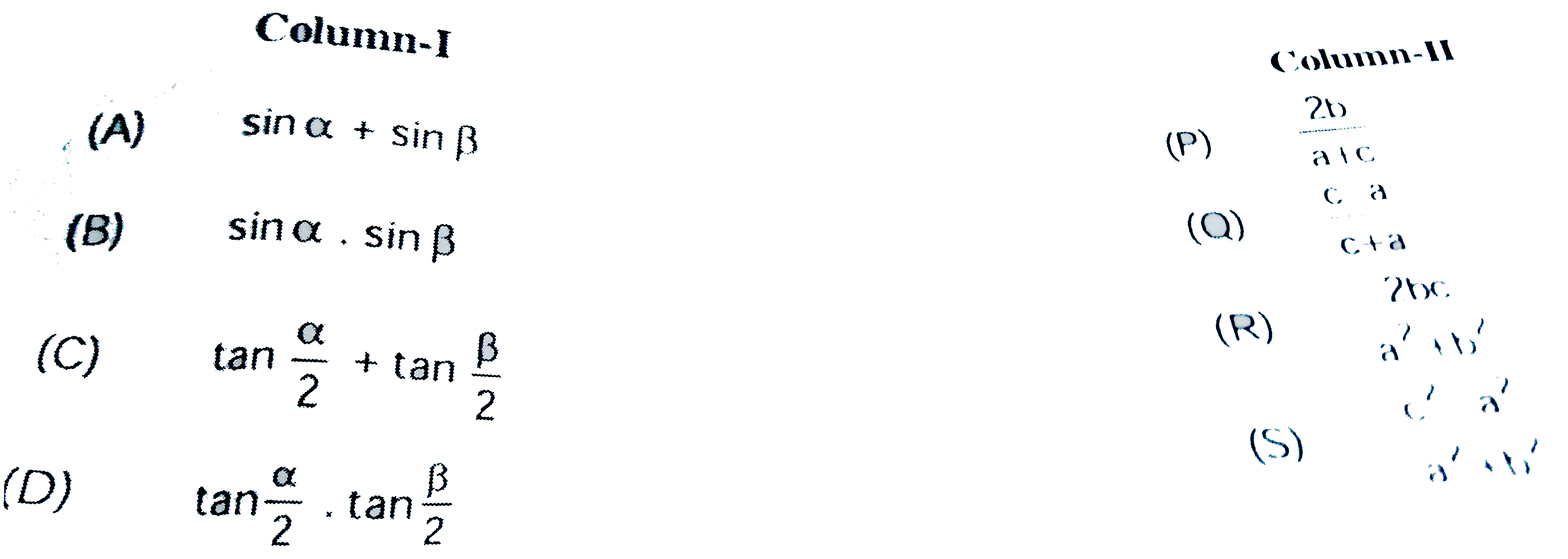α,β হল acosθ+bsinθ=c সমীকরণের দুটি ভিন্ন বীজ, a,b,c তিনটি বাস্তব সংখ্যা এবং θ∈[0,2π] | সেক্ষেত্রে α+β ঐ সমীকরণের আরেকটি বীজ হবে যদি
b+c
b+c=a
c+a=b
c=a
The correct Answer is:D
Step by step video & image solution for alpha,beta হল acostheta+bsintheta=c সমীকরণের দুটি ভিন্ন বীজ, a,b,c তিনটি বাস্তব সংখ্যা এবং thetain[0,2pi] | সেক্ষেত্রে alpha+beta ঐ সমীকরণের আরেকটি বীজ হবে যদি by Maths experts to help you in doubts & scoring excellent marks in Class 12 exams.
Updated on:21/07/2023Topper's Solved these Questions
Similar Questions
√x+1−√x−1=√4x−1 সমীকরণটির সমাধানের সংখ্যা হল
View Solutionযদি y2−4y=4x−4a এর শীর্ষবিন্দু সব সময় x+y=3 এবং 2x+2y−1=0 সরল রেখা দুটির মধ্যবর্তী অঞ্চলে অবস্থান করে তবে
View SolutionIf alpha,beta are non-real roots of ax^(2)+bx+c=0,(a,b,c in R), then (A)alpha beta=1(B)alpha=beta(C)(a beta)/(alpha beta)=1(D)alpha=bar(beta)
View SolutionLet α,β are the root of equation acosθ+bsinθ=c.
Which of the following is/are true.
View SolutionLet α,β are the root of equation acosθ+bsinθ=c.
If α=30∘ and β=60∘ such that a,b,c represent sides of a ΔABC then
View SolutionIf α and β are the roots of the equation, acosθ+bsinθ=c, then match the entries of column I with the entries of column- II

View Solutionacosθ+bsinθ=c সমীকরণ α,β(α≠β) দ্বারা সিদ্ধ হলে tanα+β2 -এর মান হবে—
View Solutionax+by+c=0,bx+cy+a=0এবংcx+ay+b=0 সরলরেখা তিনটি সমবিন্দু হবে যখন—
View SolutionIf α,β are the roots of ax2+bx+c=0, αβ=3 and a, b, c are in A.P., then α+β =
View SolutionIf α and β are distinct roots of acosθ+bsinθ=c, prove that sin(α+β)=2aba2+b2
View SolutionIf αandβ are roots of the equation acosθ+bsinθ=c then prove that,
sin(α+β)=2aba2+b2
View SolutionLet α,β be two distinct roots of acosθ+bsinθ=c, where a, b and c are three real constants and θ∈[0,2π]. Then α+β is also a root of the same equation if
View Solutionযদি a, b, c বাস্তব হয়, তবে (x-b)(x-c) + (x-c)(x-a) + (x-a)(x-b) =0 সমীকরণের উভয় বীজ সর্বদা
View Solution(cosx-x^2)=0 সমীকরণের বাস্তব বীজের সংখ্যা হল
View SolutionIf α,β are the roots of the quadratic equation x2+bx−c=0, the equation whose roots are b and c, is a. x2+αx−β=0 b. x2−[(α+β)+αβ]x−αβ(α+β)=0 c. x2+[(α+β)+αβ]x+αβ(α+β)=0 d. x2+[(α+β)+αβ)]x−αβ(α+β)=0
View Solution